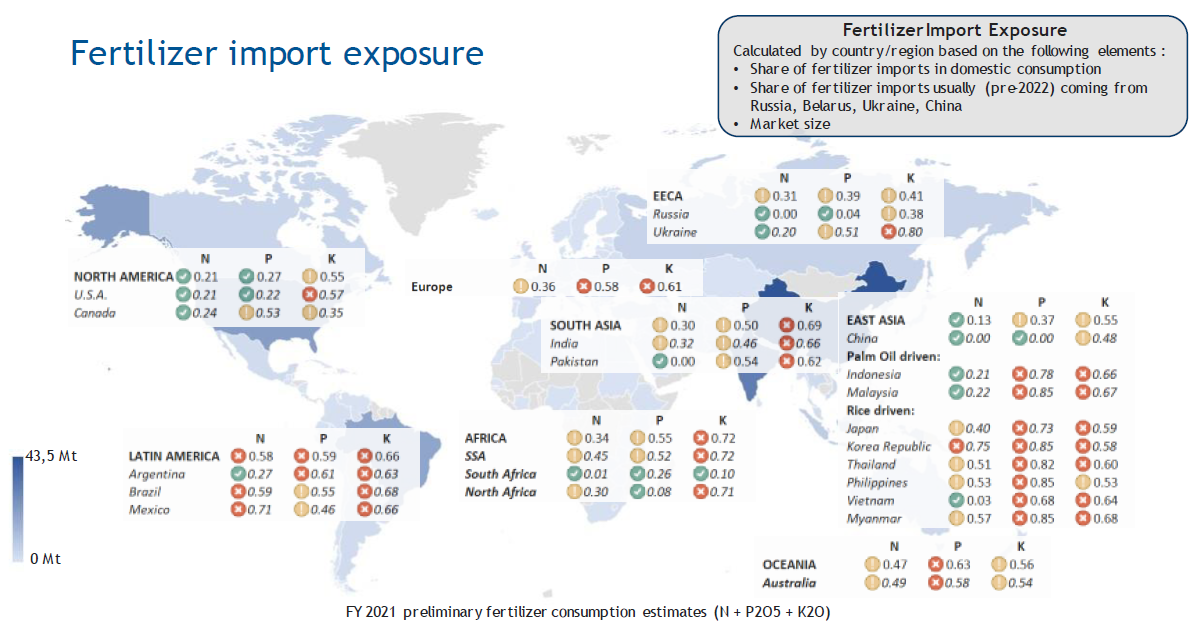
Exhibition time: 17-19 March, 2026 Shanghai, China
 中文
中文

Exhibition time: 17-19 March, 2026 Shanghai, China
 中文
中文

Key words of the passage: feertilizer; import; potash; world
Another factor considered in the supply allocation methodology is the exposure of countries and regions to fertilizer imports, particularly to imports coming from countries where exports were significantly limited in H1 2022. An index of fertilizer import exposure was developed based on the following elements: the share of fertilizer imports in domestic or regional consumption; the share of fertilizer imports sourced from Russia, Belarus, Ukraine and China in 2020 and the share of fertilizer imports in the world total.
Many countries are entirely reliant on imports of potash, given the concentrated nature of production in a handful of countries, driven by the global distribution of mineral deposits.
Phosphate import exposure is more varied across the world. North America and North Africa produce most of their phosphate fertilizer needs domestically, whereas Latin America, East Asia (excluding China) and Oceania are more exposed to imports.
The widespread production of nitrogen fertilizers means that fewer countries and regions are dependent on imports compared to potash and phosphate fertilizers. In addition, many countries produce at least part of their needs in nitrogen fertilizers. Overall, Latin America is the most exposed region to nitrogen imports based on IFA’s index.
In the West of Suez, N and P import exposure tends to be linked to Russia. In the East of Suez, N and P import exposure tends to be linked to China.
Source: IFA
